Imagine walking into a home that knows exactly what you need — the lights turn on automatically, the room cools down to your perfect temperature, and your favorite music starts playing, all without lifting a finger. That’s the power of smart home design.
With the right planning, you can fill your space with intelligent smart home appliances that save time, energy, and effort. From smart switches for home that respond with a single tap to AI in the home that learns your habits, smart living isn’t just a trend, it’s the future of comfort and convenience.

And here’s the best part: it all starts with a smart floor plan. The right layout sets the foundation for a home that’s beautiful and brilliantly connected. So, what exactly should you include in your layout?

See How We Can Reveal Fantastic Designs For All Needs!
- Interior Design - Enhance interiors with real result.
- Architecture - Revamp lifestyle with genuine ideas.
- Landscape - Elevate senses, ensure fair designs.
- Vastu - Calm anxiety, apply science correctly.
With Alacritys Architect and Interior Designer, you're not just building a home — you're crafting a lifestyle that’s intelligent, efficient, and future-ready.
TL;DR For Smart Home Designs
This guide explores 21 cutting-edge Smart Home Design ideas that merge style with functionality to create truly intelligent living spaces.
You'll discover how Smart Home Appliances, Smart Lighting Systems, and smart switches for home can simplify and enhance your daily routines.
By incorporating AI in the Home, you can personalize comfort, security, and energy use more efficiently than ever.
The article also emphasizes planning for a sustainable future with tools like a home energy monitoring system, a Smart HVAC System, and other eco-conscious features.
With expert insights on the design of smart home technology—including IoT integration, zoning, and centralized automation—you'll learn.
How AI in smart homes and thoughtful smart home automation can redefine modern living through seamless connectivity and control.
So, what exactly brings a smart home to life? Let’s uncover the 21 powerful technologies, driven by AI in the home, that turn smart home design into smarter living.
10 Smart Technology Essentials with AI in the Home
Planning to build your dream home? Before you start, it’s essential to understand how smart technology can shape every part of your living experience, from lighting and climate to security and energy savings. So let’s dive in.
1. Smart Lighting Systems and Smart Switches for Home and Efficiency
Lighting can do more than just brighten a room — it can shape how you feel. With smart lighting systems planned into your layout, you can enjoy lights that adjust automatically.

Use motion sensors, dimmers, and scenes to set the right mood, whether it’s a soft glow for relaxing or brighter lights for cooking and reading. Everything works through your phone or voice commands. Thanks to smart switches for home, you’ll no longer need to touch a wall switch. Lights turn on when you walk in and switch off when you leave — smart, simple, and energy-saving.
Real-life Tip: Many homeowners save up to 30% on electricity by using motion-based LED lights — a powerful step in your smart home automation journey.
2. Full Home Automation with AI in Smart Homes
A truly smart home connects everything, lights, Smart home appliances, fans, curtains, and even your coffee machine, into one smooth system.
That’s the power of full home automation through an IoT ecosystem. By designing power points and smart zones early, you can make room for devices like Alexa, Google Home, or Apple HomeKit. This lets you set routines, use voice control, or even manage your home while you're away.

Want the fan to turn off automatically when you leave the room? Or the curtains to open every morning? With the right setup, it’s all possible — no extra effort is needed.
Expert Insight: A well-planned IoT setup enhances convenience and allows future upgrades without messy rewiring, especially when aligned with the overall house construction step-by-step process.
3. Smart Security and Surveillance with a Smart Home Security System
Keeping your home safe starts with smart planning. Today’s smart homes go beyond strong locks — they use intelligence to protect what matters most.
By pre-wiring for surveillance cameras, smart locks, motion detectors, and doorbell cams, you ensure full coverage — inside and out — without messy wiring on your walls. Thanks to AI in the home, your system can recognize patterns, detect unusual activity, and send alerts even when you’re miles away. This is how AI in smart homes is changing the way we think about protection.

Features like home security motion sensors and a complete home security automation system are becoming essential in modern technology homes. The result? Smarter, faster, more reliable security.
Data-Driven: Homes with smart security systems are 60% less likely to get broken into than regular homes. That means more safety for you and your family.
4. Energy Management and Solar Integration with AI in Smart Homes
AI in the homes doesn’t just make life easier, it helps you live cleaner and save more. While designing your home, plan roof space for solar panels and allocate room inside for inverters and battery units. Link these with a home energy monitoring system to track power usage, savings, and performance.

With the right setup, your home becomes part of a sustainable IoT integration, where energy flows are optimized and tracked in real time. Combine this with AI in design, and you get systems that learn your habits and adjust energy use automatically. This is where modern technology in house truly shines — reducing waste and increasing control.
Green Living: A typical 3BHK in India with solar integration saves ₹1.5 lakhs over 5 years. If you're working on a smaller layout, check out our 2BHK house plan complete cost guide to plan smart upgrades within your budget.
5. Automated Curtains and Blinds with Smart Switches for Home
Want a home that opens your curtains with the sunrise or closes your blinds when the sun gets too strong? With the right planning, you can install automated doors and blinds that sync with your schedule, voice commands, or even the weather. Make sure to place electric points near the best windows design stage — it saves time and avoids rewiring later.

These systems are a key part of AI in smart homes. Paired with smart switches for home and other smart devices, they give you full control over lighting and heat, improving comfort and saving energy.
In technology homes, features like these are no longer a luxury, they’re standard. That’s the power of smart lighting systems and a well-planned smart HVAC system working together.
Pro Tip: For a clean look, conceal motor units and wiring within pelmets or window frames during construction — smart and seamless.
6. Climate Control with Smart HVAC System
Want each room to feel just right, without touching a switch? Smart HVAC systems let you divide your home into zones, using smart thermostats to control heating and cooling based on your daily routine. Add a fresh air alert for quality monitors for fresher, healthier air, and connect everything to your smart home automation plan.

Real-Life Example: A Cooler Home with Smart HVAC System & Lighting
Ravi, a homeowner in Kerala, added a smart HVAC system and synced it with smart lighting systems. His house adjusts temperature and brightness based on the time of day. With the help of AI in the home, it learns its schedule and habits. Now, his power bills are lower, and his comfort is higher. He calls it the best upgrade he’s ever made.
Pro Tip: Use geofencing tech to turn the AC on when you're 10 minutes from home. If you're designing for a mid-sized home, explore our custom 3BHK house plans for any plot size to see how smart HVAC systems can be integrated beautifully.
Now that comfort is covered, let’s explore how sound transforms the experience.
7. Multi-Room Audio and Home Theatre Systems with AI in the Home
Love music that follows you from room to room? Or movie nights with cinema-like sound? Planning for smart home technologies like speakers, subwoofers, and an AV hub during construction makes it all possible, without breaking walls later. With smart wiring and layout, you get seamless control over your home’s sound from your phone or voice assistant.

When connected with smart switches for home and other smart devices, your audio system becomes part of your overall smart home technology setup. From morning playlists to immersive home theatre experiences, this is what technology in house sounds like. especially with systems like Sonos or Bose that are built for smooth multi-room integration.
Smart Move: Pre-wire audio zones with in-wall or ceiling speakers during construction for a clean finish and true multi-room sound immersion.
8. High-speed Wi-Fi and Networking Grid with AI in Design
A smart home runs on more than just electricity — it runs on strong Wi-Fi. From smart home appliances to voice assistants, everything needs fast, reliable internet. That’s why it's smart to plan your networking grid during construction. Include ducts for cables, mesh routers, and Wi-Fi access points in key areas.

This setup supports your full IoT integration — helping all your smart devices talk to each other without slowdowns. It's an essential part of the design of smart home systems that are built to last.
Why it matters: In today’s connected world, technology homes depend on high-speed internet. With the right setup, your smart home automation will always work smoothly, from room to room.
9. Smart Kitchen Solutions with Smart Home Appliances
Your kitchen can do more than cook — it can think for you, too. Today’s kitchens are powered by smart kitchen appliances list
like app-enabled ovens, refrigerators, and dishwashers. Plan by adding the right plumbing points and power outlets for these tools, along with touchless faucets that bring both hygiene and convenience.

From cooking to cleaning, smart kitchen solutions save time and energy. With proper planning, they become a smooth part of your design of smart home system. And when all your smart home appliances connect through Wi-Fi, the result is a stylish, efficient, and future-ready space — the heart of any technology house.
Looking to optimize a compact layout? Explore our best 2BHK house design plans for a smart kitchen and space-saving ideas.
Depending on the features, the modular kitchen cost can vary, so planning early ensures both function and budget stay in sync.
Smart Move: Position power outlets and plumbing early based on appliance layout to avoid retrofitting costs and keep the kitchen clutter-free.
10. Smart Bathrooms with Smart Home Appliances for a Spa-Like Feel
Imagine stepping into a bathroom that feels like a spa — warm floors, fog-free mirrors, perfect lighting, and soft music playing in the background. With a little planning, it’s easy to add smart home appliances like heated towel racks, smart lighting, and Bluetooth-connected smart devices. From fog-free mirrors to touchless controls, everything adds to comfort and ease.
These upgrades fit perfectly into any space built with smart lighting systems and thoughtful technology in house, giving your bathroom design a luxurious yet smart personality.

When connected through your central smart home automation setup, it all works in harmony no extra effort is needed. Small touches, big difference — that’s what modern Smart Home Technologies brings to everyday spaces.
Design Tip: Place smart mirrors and lighting controls near vanity zones to enhance functionality while preserving that spa-like serenity.
Smart tech makes life easier — but what if it could also make the planet better? Let’s dive into the sustainability-driven features that make your smart home future-ready in every sense.
5 Sustainability-Driven Smart Home Design Features
Going smart can also mean going green. Smart features like solar-ready wiring, sensor-based lighting, and energy monitoring systems help reduce your footprint and monthly bills. Planning them early ensures they work efficiently within your design
11. Solar Energy Systems in AI in The Homes
Solar power is one of the smartest ways to save energy and lower bills — and it all begins at the planning stage. During the layout phase, reserve rooftop areas that receive maximum sunlight. Inside, allocate space for inverters and battery backups. When combined with a home energy monitoring system, you can track savings and optimize usage daily.

Solar is a vital part of technology homes, especially when connected to your wider AI in smart homes network. These systems can even sync with AI in the home to adjust loads based on usage trends.
As more smart home technologies go green, solar becomes a key feature in the AI in design approach to technology in house, where smart living meets sustainable choices.
Expert Insight: Choose smart inverters that work with AI to shift heavy usage away from peak hours — boosting efficiency and saving on bills.
12. Rainwater Harvesting System in the Design of Smart Home
Water is precious, and saving it begins right at home. By planning sub-surface filtration pits and collection tanks at the design stage, you can set up an effective rainwater harvesting system that works quietly in the background. It’s a smart feature that fits beautifully into the design of smart home built for the future.

When connected with your home energy monitoring system, it becomes part of a larger ecosystem that helps you track water use, reduce waste, and live more sustainably. In a truly technology-forward house, eco-friendly features aren’t just extras — they’re essentials.
Smart homes don’t just run better — they respect the planet too.
Green Insight: Install smart water level sensors in your collection tanks to monitor storage in real time and automate overflow control during heavy rains.
13. Greywater Recycling and STP Units with AI in Design
Every drop counts — and smart home design now includes systems that help you reuse and save water without extra effort. With early planning, you can route wastewater from sinks, showers, and washing machines to a greywater treatment system or STP unit. This treated water is then reused for gardens, flushing, and cleaning, reducing water usage by up to 40%.

Connected to your home energy monitoring system and integrated through IoT, these features seamlessly track flow and send maintenance alerts, a smart, sustainable upgrade for any technology homes, perfectly fitting the design of smart home supported by AI in design and built for long-term efficiency.
Even in compact layouts like a 3BHK house design in 1000 sq ft., these water-saving systems optimize space and sustainability together.
Pro Tip: Schedule automatic maintenance checks via the system’s app to prevent blockages and ensure clean water recycling year-round.
14. Organic Waste Composting Units with Smart Home Appliances
What if your kitchen waste could help your garden bloom? By adding a composting station outdoors or automating smart home appliances like smart digesters, you can turn daily kitchen waste into nutrient-rich compost. It’s clean, easy, and a natural part of smart home design.

These composting units can also be connected to your home energy monitoring system to track usage and savings over time. In technology homes, even waste becomes a resource.
Sustainable Living: You reduce landfill waste, grow healthier plants, and make your next-gen home design even more future-friendly — all from your kitchen corner.
15. Smart Garden and Irrigation Systems with Smart Switches for Home
Want a garden that takes care of itself — even when you're on vacation? With smart devices like moisture-sensing sprinklers and weather-based timers, your garden gets just the right amount of water — no more, no less. Plan wiring and water lines early to sync with your smart home automation setup.
These systems connect smoothly with your home energy monitoring system and fit right into the design of smart home layouts. You save water, grow a healthier lawn, and never have to worry when you’re away. In a complete smart home design, even your garden thinks for itself.

Smart Move: Choose irrigation systems with real-time weather syncing to prevent watering before or during rainfall, maximizing efficiency.
While eco-friendly innovations lay the foundation for a smarter planet, it’s the lifestyle-enhancing touches that turn a smart home into a truly personalized sanctuary — let’s explore those next.
6 Lifestyle Enhancers in Smart Home Design Worth Planning Early
Smart living starts with thoughtful planning. Features like voice-controlled lighting, remote-access doors, and entertainment systems can take your lifestyle to the next level — but only if they’re integrated from the beginning.
16. Automated Main Gate and Garage Access with Smart Home Security System
Tired of stepping out in the rain just to open the gate? With early planning, you can install automated doors that open with RFID tags, remotes, or even phone apps — no buttons needed. Add camera-linked gates for an extra layer of security and connect everything to your smart home security system.

Pre-wiring these setups during construction avoids messy installations later and makes your entrance smarter from day one. This is where true smart home design meets daily comfort, giving you smoother access, better safety, and a future-ready feel to your technology house.
Pro Tip: For an even smarter garage, consider installing a hydraulic car lift — perfect for compact spaces and multi-car homes.
17. Natural Light Management with Smart Glass and AI in the Home
Imagine windows that adjust to sunlight — no blinds, no glare, just perfect lighting all day. With smart home technologies like electrochromic glass, your windows can darken, brighten, or block UV rays automatically. These smart devices not only reduce heat but also protect your smart interior design ideas, all while syncing with your smart home automation setup.
Include these in your smart home design plan to reduce dependence on artificial lighting and enjoy year-round energy savings. In premium technology homes, smart glass is now a must-have for both comfort and sustainability.

Welcome to next-gen home design, where natural light is intelligently managed, and your windows think for you, and layouts like duplex house designs for stylish living shine with architectural elegance..
Expert Insight: For optimal performance, integrate smart glass with AI-powered sensors that track sunlight intensity and room temperature in real-time.
18. Smart Mirrors with Fitness and News Integration using Smart Home Appliances
What if your mirror could coach your workout, read you the news, and adjust the lighting around you? With today’s smart home appliances, mirrors go beyond reflection. These intelligent smart devices offer real-time health tracking, voice commands, and even video tutorials. Just set them up with the right power supply and Wi-Fi during the layout phase.

They're a perfect fit in any technology house and become even more powerful when connected with AI in smart homes and your overall IoT integration setup. They respond to schedules, sync with smart lighting systems, and help you start the day informed and motivated.
Expert Insight: When it comes to smart interior design ideas, a mirror that thinks is more than decor — it’s a transformation.
19. Smart Water Leak Detection System Powered by AI in the Home
Water damage can be expensive, but what if your home could warn you before it happens? With a smart home security system, leak detection devices alert you instantly through your phone when a pipe bursts or a faucet drips. It’s a smart safety net for busy families, second homes, and rental properties.

Plan sensor placement near kitchens, bathrooms, and under sinks during the design of smart home layouts. Connected through IoT integration, they sync with your home energy monitoring system for real-time updates. In technology homes, even a hidden leak can’t go unnoticed — and that’s true peace of mind.
Pro Tip: Install leak sensors as part of your smart home automation plan. They work even when you're not at home. With IoT integration, you’ll get instant alerts on your phone if there’s a leak in the kitchen or bathroom. It’s a smart way to protect your technology house and avoid costly repairs.
20. Voice-activated room Controls with Smart Switches for Home
“Turn off the lights.” “Play my playlist.” “Start the AC.” — What if your home could listen and respond? With smart switches for home, you can control lights, fans, curtains, and appliances just by speaking. These controls work with Alexa, Google Assistant, and Siri — all part of a well-connected smart home technology setup.

Plan voice access points and smart zones early in your smart home design plan. When paired with AI in the home, your routines become smoother — lights turn on as you enter, and the AC adjusts to your preferences. This is the true magic of technology in house, comfort, speed, and control, all hands-free.
Pro Tip: Plan smart speaker locations in central or high-traffic areas to improve voice command accuracy and response speed.

See How We Can Reveal Fantastic Designs For All Needs!
- Interior Design - Enhance interiors with real result.
- Architecture - Revamp lifestyle with genuine ideas.
- Landscape - Elevate senses, ensure fair designs.
- Vastu - Calm anxiety, apply science correctly.
21. Centralized Smart Control Hub with AI in Smart Homes
A truly smart home brings everything together in one place. With a centralized smart control system, you can manage lighting, appliances, HVAC, security, and more from one interface. These hubs are the brains of your smart home automation setup, linking all your smart devices through Wi-Fi, apps, or voice assistants.
When planned during the layout stage, they work seamlessly with your IoT integration, AI in the home, and other systems, making it easy to adjust settings, monitor energy, and stay in control from anywhere.

Case Study: Seamless Living with a Fully Integrated Smart Control System
In a 3BHK technology home in Pune, a family installed a centralized hub connected to smart lighting, home security motion sensors, and a smart kitchen appliances list. With just one app, they now control their entire home — from unlocking doors to checking who’s at the gate, even while vacationing in Kerala.
Smart Hack: Apps like Control4, Smart Reboot, or Apple Home let you operate your home from your phone — even reboot devices remotely if they go offline.
From everyday luxuries to intelligent conveniences, it's clear that smart home design isn’t just about gadgets — it's about thoughtfully crafting a lifestyle. So, how do you bring it all together right from the start?
Key Takeaways For Home Design Ideas
- Smart Home Design integrates aesthetics with automation for comfort, control, and efficiency.
- AI-powered Smart Home Appliances streamline daily routines with voice control and adaptive features.
- Smart switches for the home offer energy-saving convenience and easy integration with lighting systems.
- Incorporating AI in the Home personalizes living by learning habits and automating accordingly.
- A home energy monitoring system helps track usage and promotes sustainable, smart living.
- IoT integration connects devices like lighting, HVAC, and appliances for seamless home automation.
Final Thoughts on Smart Home Design from the Start
Designing a smart home isn’t just about gadgets — it’s about creating a lifestyle that’s efficient, comfortable, and future-ready from day one. When you plan your layout with the design of smart home in mind, everything falls into place — from seamless automation to personalized experiences.
Whether it's installing smart switches for home, choosing the right smart home appliances, or integrating AI in the home, every decision builds toward a smarter tomorrow. Many of these innovations are now shaping the latest penthouse floor plan trends, where technology meets luxury and layout brilliance.
The best part? You don’t have to do it alone. Let the experts at Alacritys Architecture and Interior Design Services guide you through the process, from layout planning to complete smart home automation integration. With their experience in architecture and technology, your dream home will be intelligent, intuitive, and beautifully designed.
Brainstorming Questions
- What are the must-have technologies in a smart home design?
- How does AI in the home personalize your living experience?
- Is it worth investing in a full home automation IoT ecosystem?
- Which smart home appliances are essential for a modern kitchen?
- How can smart home design support sustainable living without compromise?
FAQs
Smart technology in homes includes smart lighting systems, smart HVAC systems, home energy monitoring systems, and smart kitchen solutions. These features are often connected through IoT integration, allowing you to control devices from your phone or voice assistant. With proper smart home automation, your home becomes energy-efficient, secure, and more comfortable — a true example of modern technology in house.
A smart house design is a well-planned layout that includes smart home technologies like smart lighting systems, smart HVAC systems, and smart devices integrated from the start. It uses AI in design and IoT integration to create a home that’s energy-efficient, secure, and easy to manage. The design of a smart home focuses on future-ready living, making everyday tasks simpler through automation and connectivity.
The latest smart home technologies focus on making life more convenient and energy-efficient. Innovations like AI in homes, smart lighting systems, and upgraded smart HVAC systems allow homeowners to control settings remotely and automatically. With smart features built into the early design of a smart home, daily tasks become simpler, safer, and more sustainable.
The future smart home is designed to be intuitive, efficient, and responsive. It uses connected systems that learn your habits to control lighting, climate, and security with minimal effort. With thoughtful planning and the right technology, smart homes will focus on comfort, energy savings, and seamless living — all built into the very design of the home.
A smart home in IoT (Internet of Things) connects everyday devices—like lights, thermostats, and appliances—to the Internet, allowing them to communicate and work together. Through IoT integration, you can control these smart devices remotely using your phone or voice assistant. This setup improves comfort, saves energy, and enhances security, making it a key part of modern smart home automation.











